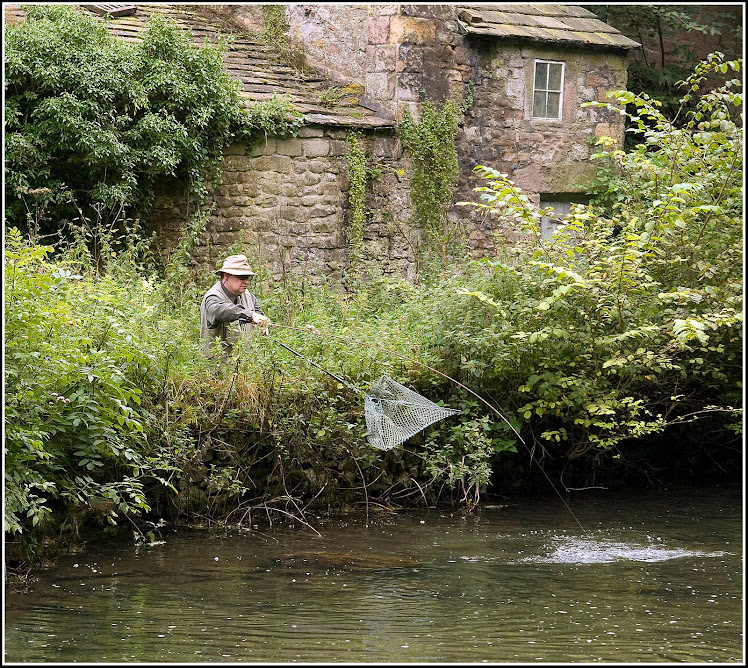First of all, a Happy Fourth of July to you readers in America! It is customary for your faithful blogger to wish you all well on this day each year and this year is no exception.
Today is a good day to acknowledge how, in less than 100 years after your independence, American know how and improvements in materials had already influenced fly fishing in general and dry fly fishing in particular here in Great Britain. It was two way traffic though, because the new materials led to changes in rod design here that wended their way back to the USA where they were then developed even further on both sides of the Atlantic, to the benefit of dry fly fishers everywhere.
"What the Devil is Regular Rod on about?" you may wonder.
 You may recall mention in these posts of James Ogden, a Victorian fly fisher and entrepreneur who set up in business in the 1840's to supply his floating flies by mail order. His business grew and by the 1860's he was supplying much more than his flies. By then he had trade links with manufacturers and suppliers of materials from around the world including the USA. Of particular note were the new silk fly lines that were available from makers in several different countries. Most of these lines had an inbuilt flaw due to the manufacturing process. They had little bits of silk sticking out along their entire length due to the sections of silk each having a start and an end. This was not a big deal to anglers at the time because for centuries they had used and many still did use, lines made of lengths of horse hair, which had the same problem of bits sticking out. The style of casting a line then was to lay the line out in one go using a long rod, a boy may have an eleven or twelve foot rod and a man's may be as long as eighteen feet although rods of sixteen feet were more commonly seen. It worked. Fish were caught. The pleasures of angling were enjoyed. So why worry?
You may recall mention in these posts of James Ogden, a Victorian fly fisher and entrepreneur who set up in business in the 1840's to supply his floating flies by mail order. His business grew and by the 1860's he was supplying much more than his flies. By then he had trade links with manufacturers and suppliers of materials from around the world including the USA. Of particular note were the new silk fly lines that were available from makers in several different countries. Most of these lines had an inbuilt flaw due to the manufacturing process. They had little bits of silk sticking out along their entire length due to the sections of silk each having a start and an end. This was not a big deal to anglers at the time because for centuries they had used and many still did use, lines made of lengths of horse hair, which had the same problem of bits sticking out. The style of casting a line then was to lay the line out in one go using a long rod, a boy may have an eleven or twelve foot rod and a man's may be as long as eighteen feet although rods of sixteen feet were more commonly seen. It worked. Fish were caught. The pleasures of angling were enjoyed. So why worry?
The art of selling sometimes relies on helping folk realise that they actually do need what you have and that a new way may be better for them. James Ogden did this for fly fishers. He imported his silk fly lines from America and these lines were dressed with a tough coating that sealed in all those sticking out ends of silk. They were smooth. Unlike the other lines they would pass through the rod rings (guides) very easily and didn't jam up. Some anglers discovered that it was possible to extend the cast by shooting these smooth running lines through the rings. James Ogden noticed this and realised that a long rod was unnecessary if you used the "shooting a line" technique. So he introduced a range of short rods, some only eight feet long, under the name "Multum in Parvo" ("Much in Little").
 |
| American idea of six sides, English made rod, American FISH! |
Below are a few snippets from an Ogden catalogue of the period. It would seem fly lines have always been pricey items. 6/6 in labour content in those days would be £183.10 today ($236.80) !!!
Well here is at least one dry fly fisher who is very glad of the American influence on our Sport, wishing you all another "Happy Fourth of July"!
Regular Rod









